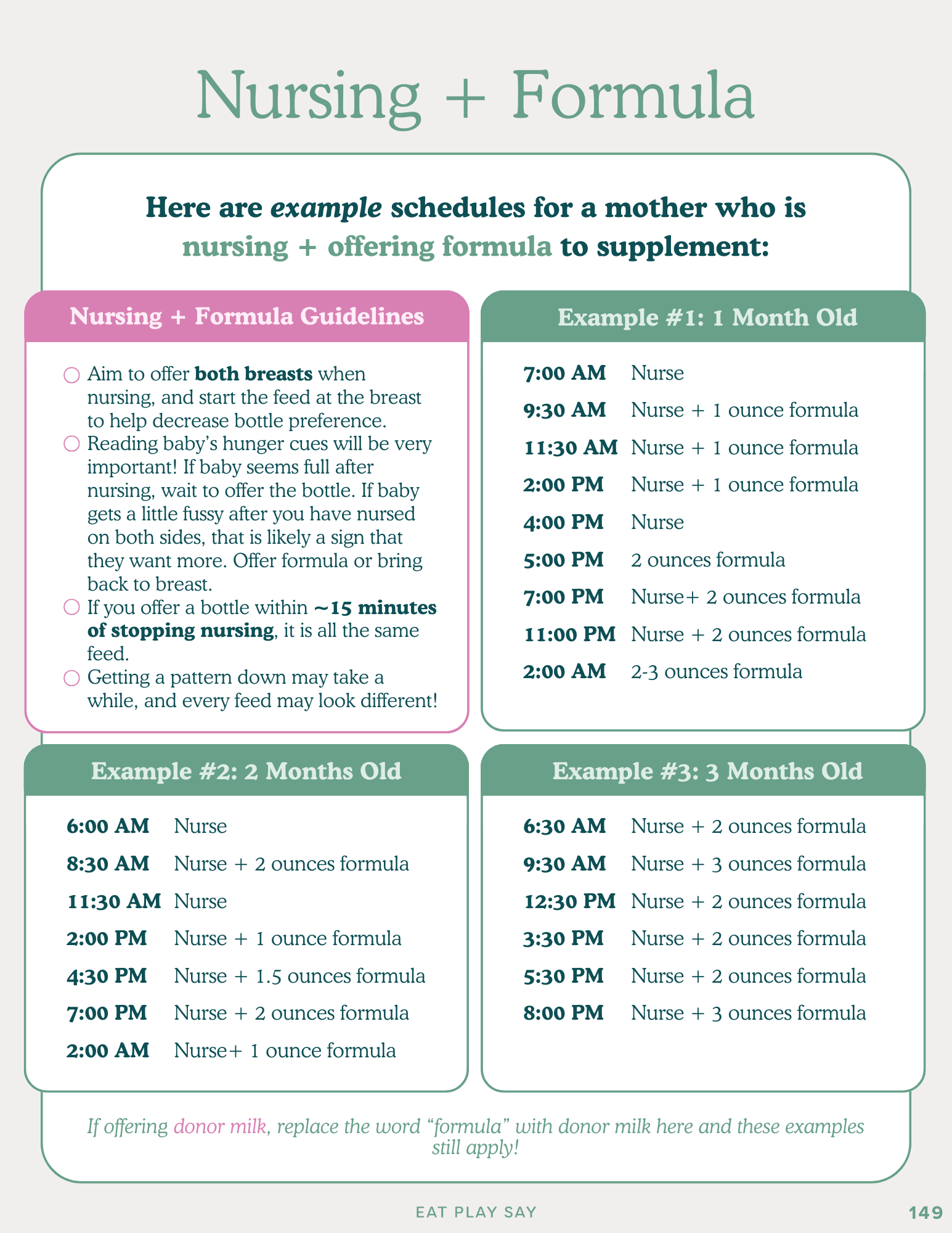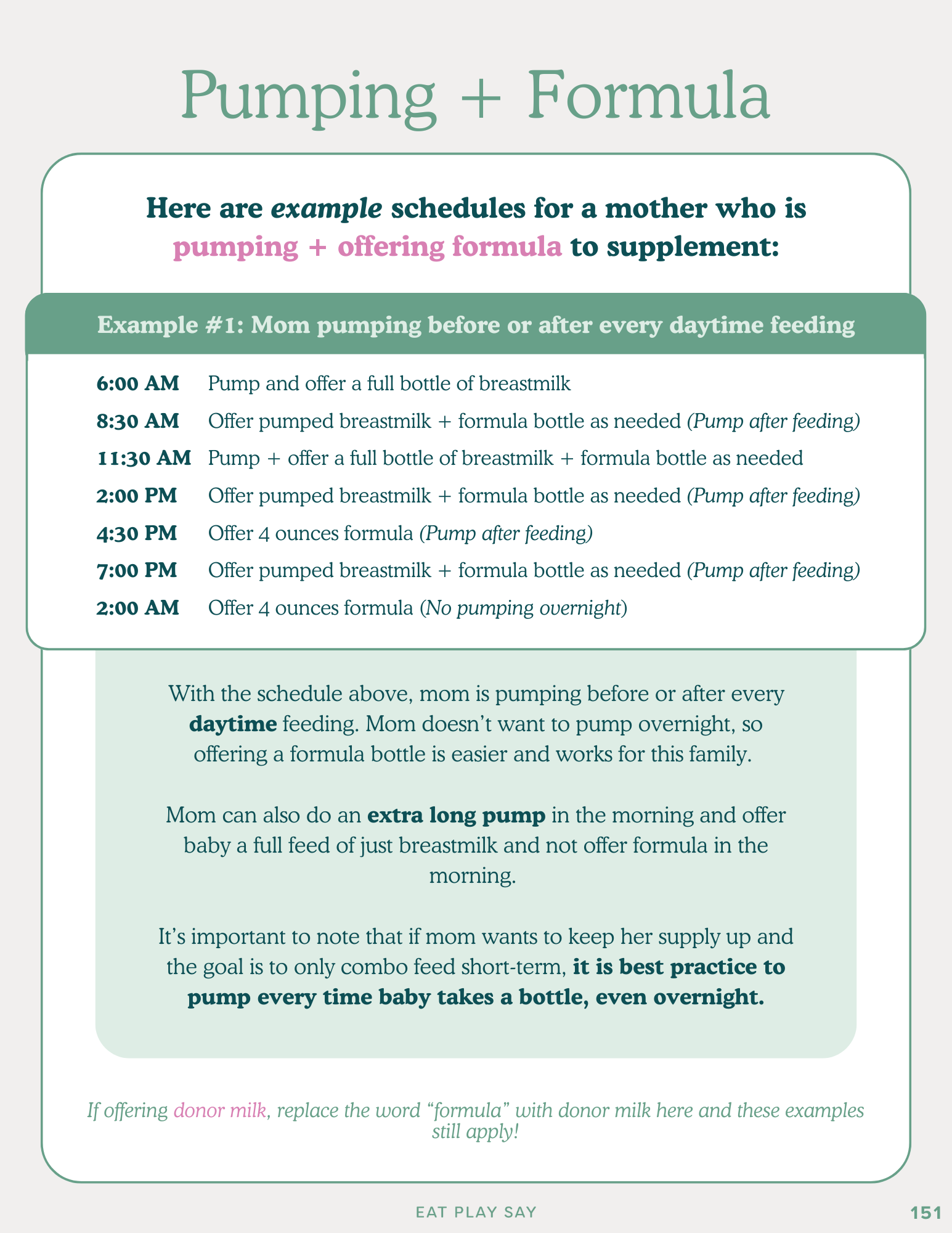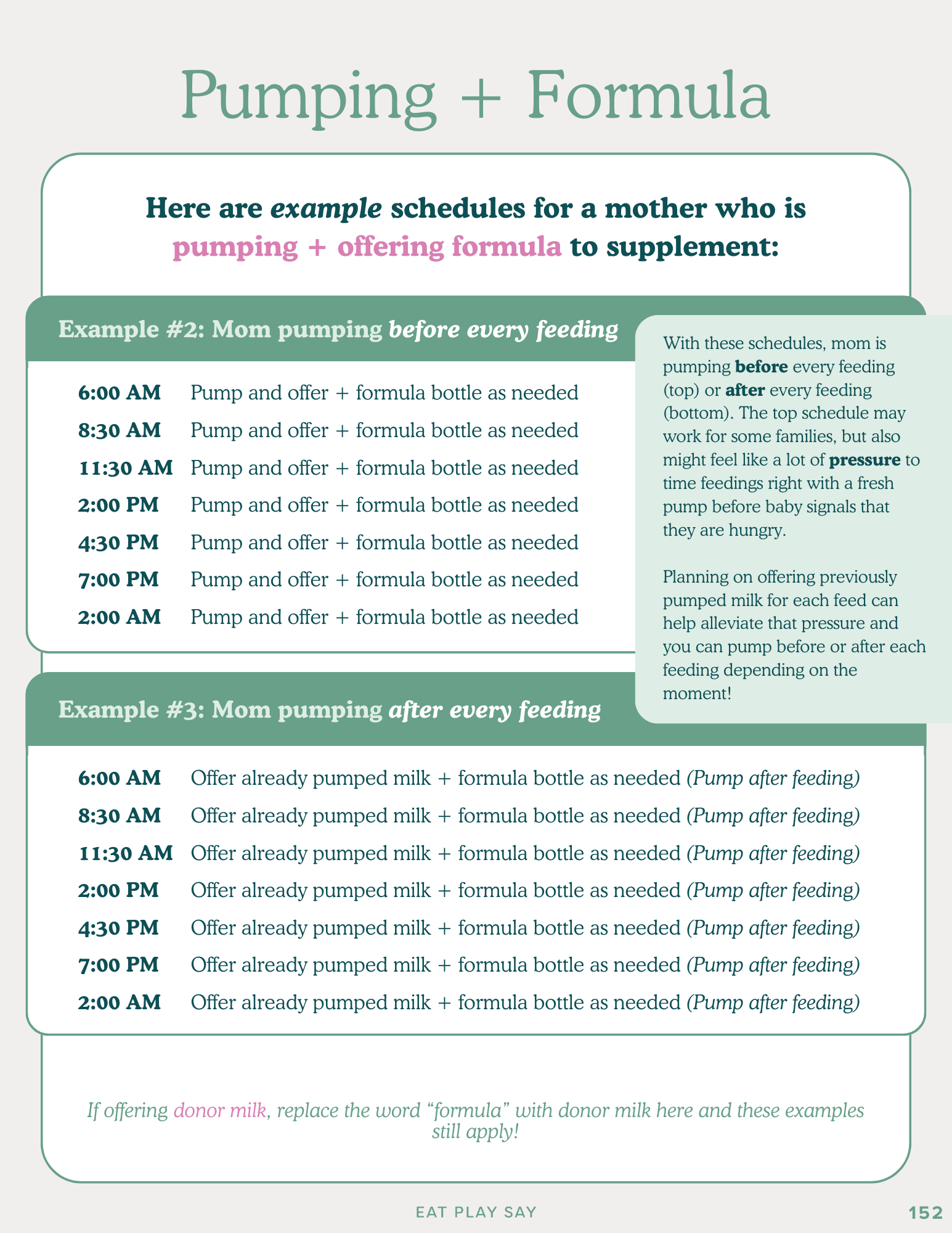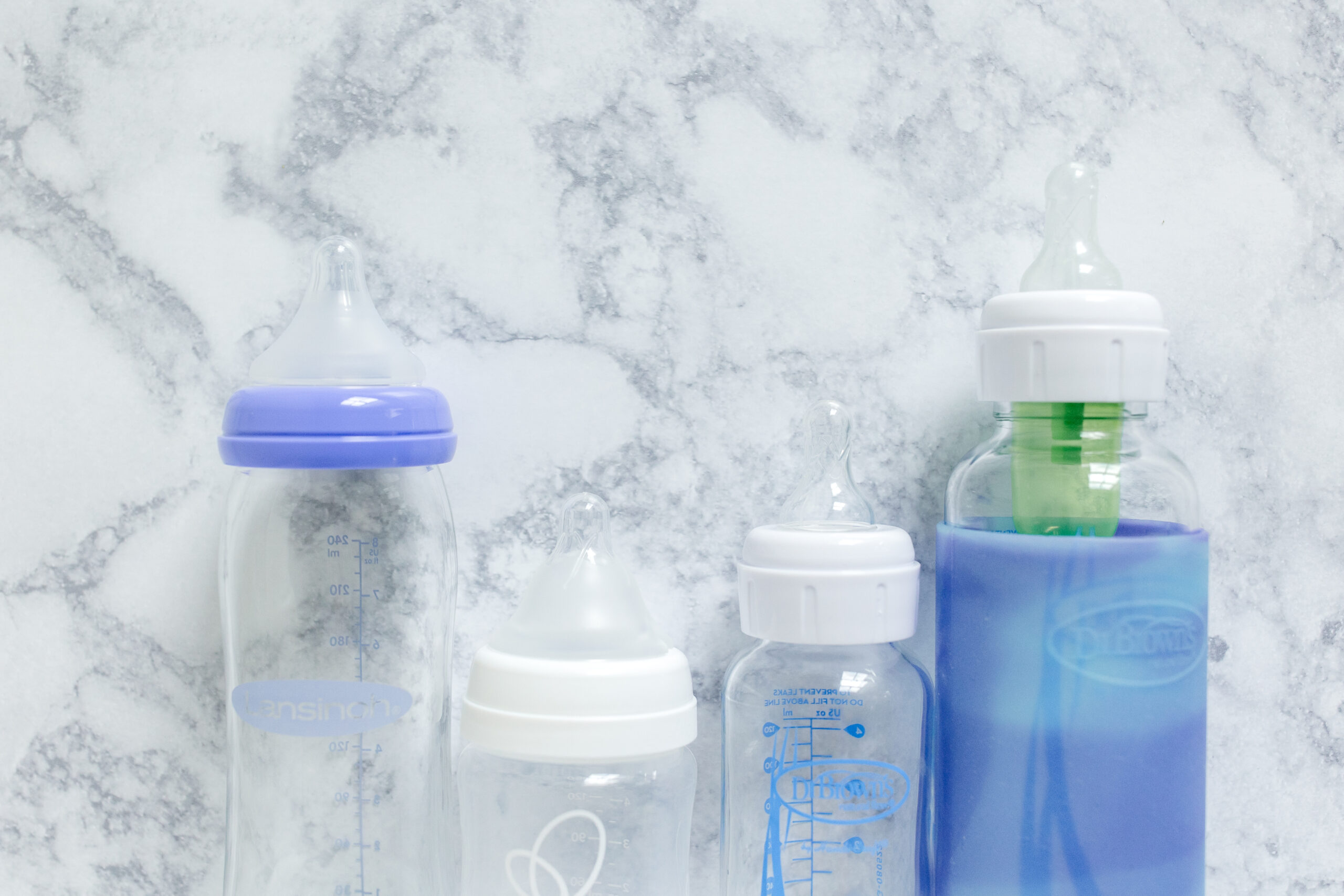In partnership with ByHeart. Editor’s Note: We only select and work with partners that align with our core values, so you can rest assured we only endorse products we trust and believe in.
A Guide to Supplementing with Formula
I’ve been a breastfeeding mom and a formula feeding mom, and as a feeding specialist, talking about all the ways of feeding a baby is my jam!
Picking a formula can be overwhelming, especially when trying to understand formula ingredients and wanting to pick a formula that is close to breastmilk from a nutrition perspective. It’s time to take the overwhelm out of the equation and start to feel confident!
Let’s walk through what “close to breastmilk” means, how to supplement with formula successfully, and how to feel good about what you’re feeding your baby.
What is “Combination Feeding?”
“Combination feeding” – also called “combo feeding” – is exactly what it sounds like: offering your baby both breastmilk and formula. And this type of feeding is actually way more common than you would think!
From the CDC Breastfeeding Report Card, we know that about 75% of babies receive formula within the first 6 months of life. One recent survey found that about half of breastfeeding mothers supplement with formula to help them meet their breastfeeding goals. (1)
Combination feeding helps mothers elongate their breastfeeding journey.
If a mother isn’t making enough milk, it doesn’t have to be the end of a breastfeeding journey. In fact, formula can actually help keep breastfeeding going.
Maybe a mother wants another caregiver to feed baby, maybe outside factors are impacting supply or pump schedules, or maybe a mother just wants to have the option for baby to feed both ways.
Combo feeding can positively impact families and help extend breastfeeding journeys, and that is something to celebrate!

Which Formula is “Close to Breastmilk?”
Let’s break down what makes up breastmilk and formula by focusing on the main components: protein, fat, carbohydrates. The sources of these components is what’s important when looking for a formula that is close to breastmilk.
What Protein is in Baby Formula?
The standard protein source in infant formula comes from cow’s milk, and the main types are whey and casein.
When looking for a formula that is close to breastmilk, choosing one that contains more whey than casein is more similar to breastmilk.Human breastmilk varies but is about 60-80% whey and 20-40% casein, while the standard cow’s milk protein used in many common formulas is about 20% whey and 80% casein. (2)
Formulas like ByHeart’s Whole Nutrition Infant Formula achieve a whey to casein ratio closer to that of breastmilk (ByHeart has around 80% whey and 20% casein). This additional whey can be gentler on stomachs and digestion (3).
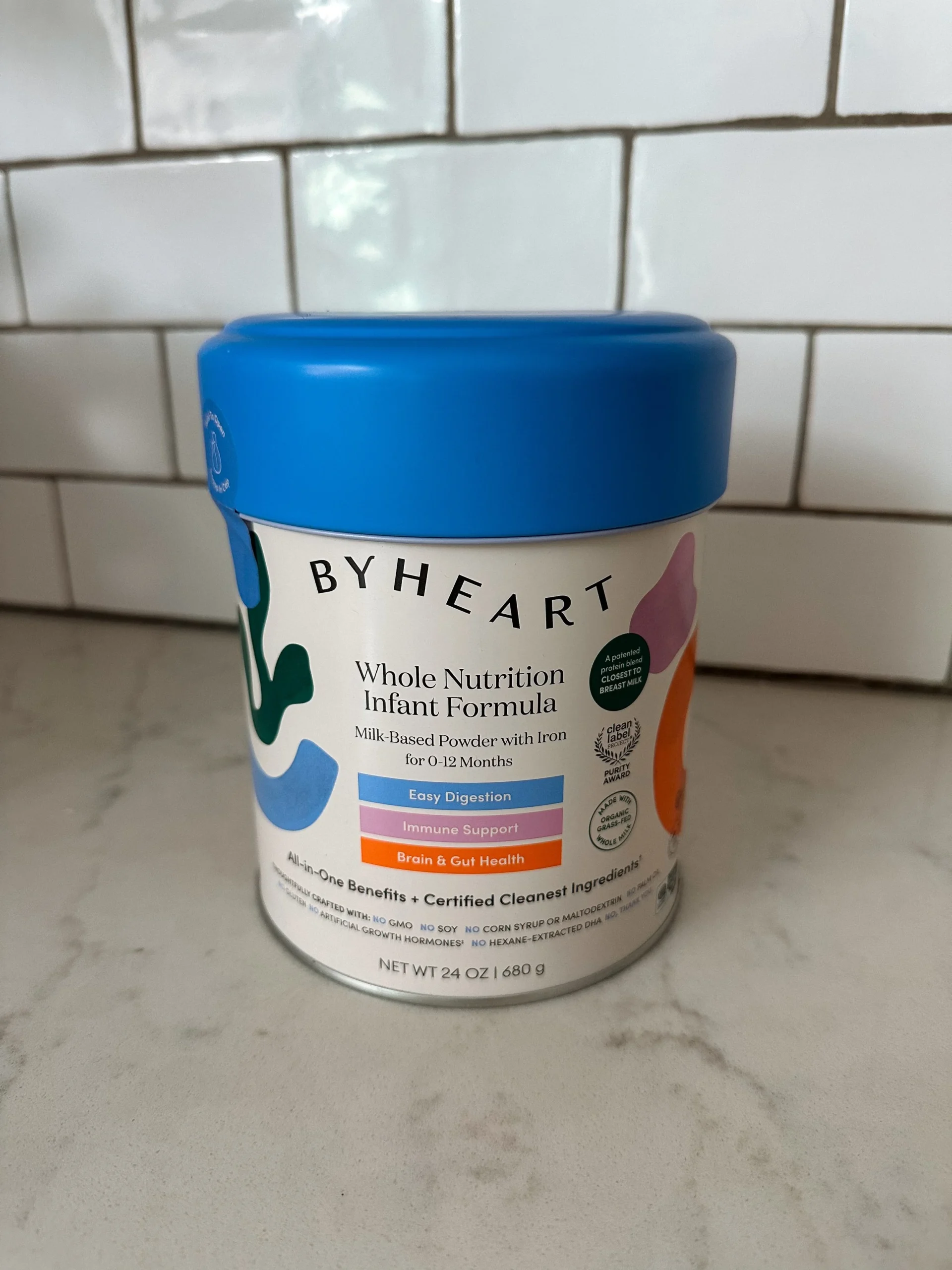
ByHeart Whole Nutrition Infant Formula
What Fat is in Baby Formula?
Most baby formulas contain palm oil as a main fat source. While palm oil provides a large amount of palmitic acid, which is similar to the fat in breastmilk, it is not absorbed as well as the palmitic acid from breastmilk.
The unabsorbed palmitic acid can also impact the absorption of calcium from the formula – it is passed out through poop instead of absorbed (4).
Several studies have shown that babies drinking formula with palm oil only absorb 40% of the calcium from their formula vs. babies consuming formula without palm oil absorb 55% of the calcium. Breast-fed babies absorb 60% of the calcium from breastmilk (4).
When looking for a formula that is close to breastmilk, avoiding palm oil as the primary fat source may be desirable, especially if baby is struggling with constipation! Instead, look for a formula with a higher amount of other fat sources, such as whole milk, coconut and sunflower oil.
An example of this is ByHeart’s Whole Nutrition Infant Formula, which contains organic high oleic sunflower, organic low erucic rapeseed, organic coconut, and organic sunflower oils in combination with fats from whole milk instead of palm oil.
What Carbohydrates are in Baby Formula?
The sources of carbohydrates in formula can be lactose, corn syrup, corn syrup solids, corn maltodextrin, glucose syrup, brown rice syrup and sucrose.
Lactose as the main carbohydrate source is preferred because that is what will be close to breastmilk. Lactose is beneficial to baby as a carbohydrate source compared to other sources because it helps with effective absorption of calcium and sodium, it acts as a prebiotic to feed good bacteria in the intestines, and it helps to soften stools.
The following formulas have lactose as their main carbohydrate source:
-
ByHeart Whole Nutrition Infant Formula
-
Kendamil Organic and Goat Infant Formulas
-
Bobbie Organic Infant Formulas
Extra: Prebiotics in Baby Formula
Prebiotics are preferred in formula, as these are also found in breastmilk and aid in digestion. Common ones found in formula are Galactooligosaccharides (GOS), Fructooligosaccharides (FOS), , Human Milk Oligosaccharides (HMO), and Polydextrose (PDX).
For example, ByHeart’s Whole Nutrition Infant Formula contains prebiotics towards the top of the ingredient list, meaning that they are in large quantities within the formula.
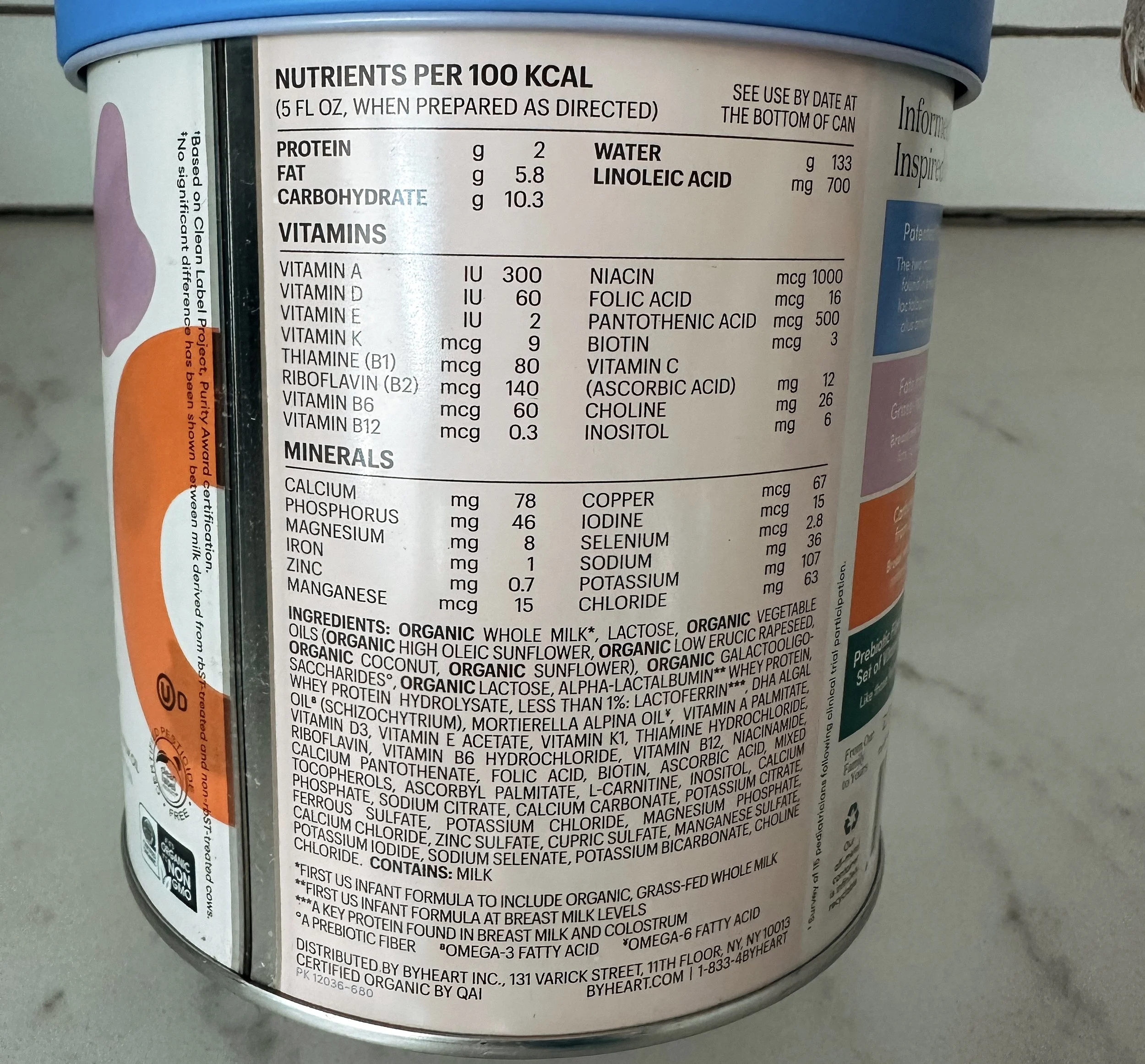
ByHeart Whole Nutrition Infant Formula
How to Supplement with Formula with ByHeart
Now that you’ve learned which ingredients in formula are close to breastmilk, how do you introduce formula to your breastfed baby? And how do you get on a schedule to combo feed?
If you are nursing and wish to introduce formula to your baby as a way to supplement there are a couple ways you can do it. First, getting baby to take a bottle of formula is the goal!
Option 1: Offer Breastmilk First, Then Formula
Have two bottles with you: one with breastmilk and one with formula. Aim to have about 50% of what baby drinks in the breastmilk bottle and the other 50% in the formula bottle.
Offer the formula bottle once baby has finished the breastmilk bottle. Why? Adding mixed formula to breastmilk actually decreases the beneficial properties in breastmilk. So, it’s best to offer breastmilk and formula in succession of one another and not mixed in the same bottle if you can.
But, we know that babies don’t always follow the “best practices” rule book! And that is okay. For some babies, they will taste the difference between breastmilk and formula and will need a more gradual transition to accepting formula. If that is the case for your baby, the next method is also an option to get your little one to accept formula in a bottle.
Option 2: Mix Breastmilk with Formula
Offer a bottle of pumped milk to baby and slowly change out the pumped milk for formula across several feeds. Start with 75% breastmilk and 25% mixed formula for a feed or two. Then 50/50. Then 25% breastmilk and 75% formula. Then 100% formula.
(Make sure you premixed the formula in a separate container first before adding to the bottle of breastmilk- do not add powdered formula that has not already been mixed into a bottle of breastmilk.)
If your baby is struggling to accept a bottle, know that you’re not alone. It can take a little while for baby to get used to taking bottles if they haven’t taken them before. Our Bottle Refusal Guide* written by our Lactation Consultants and Feeding Specialists can also help.
Also be sure to carefully watch baby as you introduce a new formula and talk to your pediatrician about any concerns.
*Views expressed in the Bottle Refusal Guide are those of the authors and not ByHeart. For specific questions about your baby’s nutritional needs, always consult with your pediatrician or healthcare provider.

How to Get on a Combo Feeding Schedule
Getting in the groove of combination feeding will look different for every parent, but we have a few examples outlined below from our Infant Feeding Handbook* depending on whether you are nursing or pumping.
These schedules are examples and everyone’s day-to-day will look different, but as you can see, there are plenty of ways to combination feed. In time, you will find the rhythm that works for you!
*Views expressed in the Infant Feeding Handbook are those of the authors and not ByHeart. For specific questions about your baby’s nutritional needs, always consult with your pediatrician or healthcare provider.
How to Keep Your Breastmilk Supply Stable
Combo feeding can elongate breastfeeding journeys and help mothers meet their goals. Once you learn how to do the dance of breastmilk and formula together, you can keep on dancing as long as you’d like!
When I introduced formula to my son, I wish I would have known how I could have kept my supply up and stable enough to offer breastmilk too, and not fully make the switch to formula. I just didn’t have the education that I do now, so I’m happy to give this education to you!
If your goal is to continue breastfeeding your baby as you offer formula too, make sure to prioritize breastfeeding as you can throughout the day and night. Pump when baby has a bottle as much as you can, bring baby to breast often for nursing (even if only for short sessions, frequency is key!)
In order to keep that balance of breastfeeding and formula feeding, you will need to prioritize both a formula that is close to breastmilk (and one your baby will take) and breastfeeding (whether nursing, pumping, or both!) Give yourself grace as you find that perfect balance and make changes as you need to!
Transitions are never easy at first, but they are just a reminder that we can do hard things.
Ready to try ByHeart for your supplementing journey? Learn more and shop now!
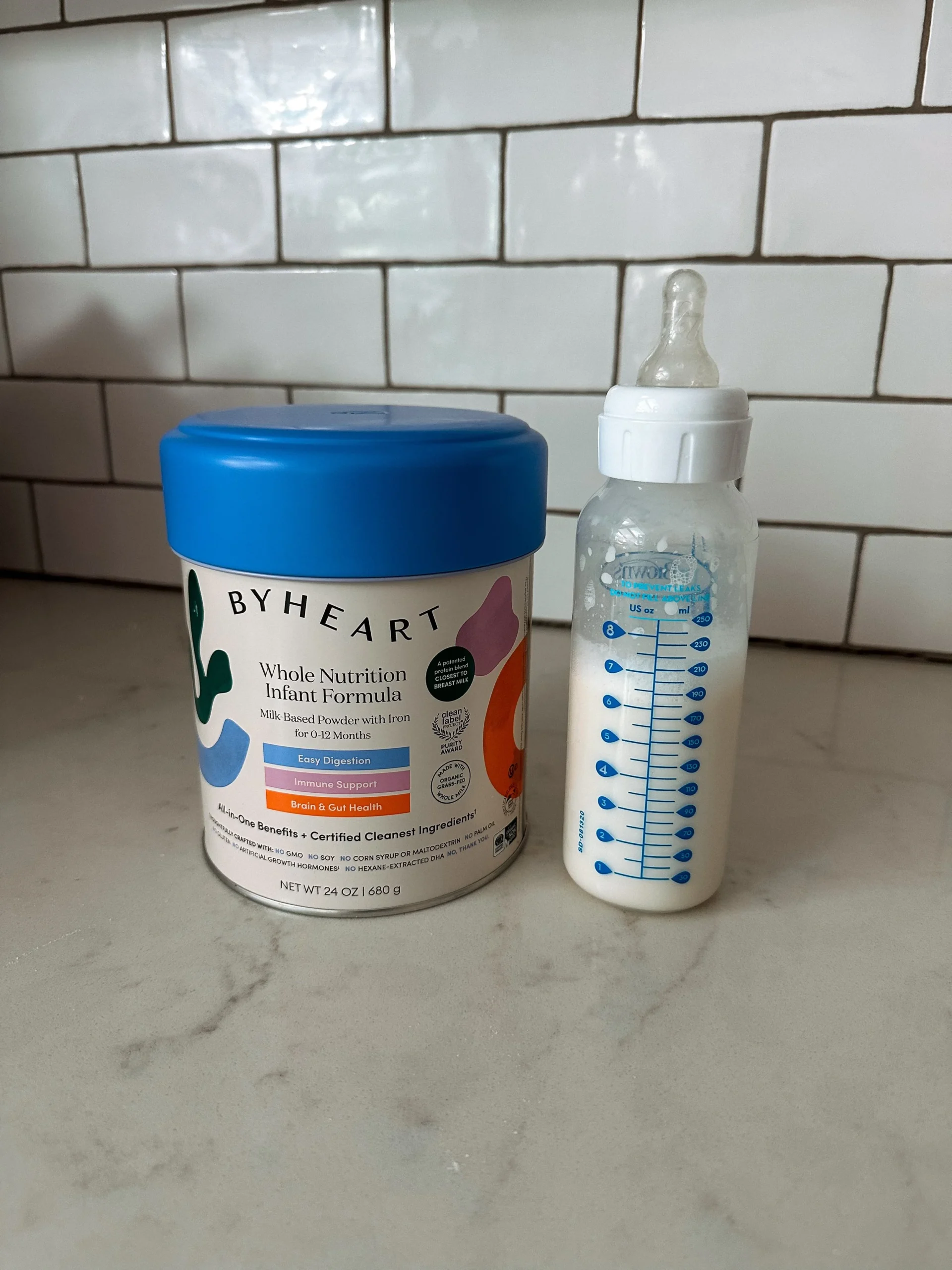
ByHeart Whole Nutrition Infant Formula
Sources:
-
Radzyminski S, Callister LC. Mother’s Beliefs, Attitudes, and Decision Making Related to Infant Feeding Choices. J Perinat Educ. 2016;25(1):18-28. doi: 10.1891/1058-1243.25.1.18. PMID: 26848247; PMCID: PMC4719110.
-
Meyer R, Foong RX, Thapar N, Kritas S, Shah N. Systematic review of the impact of feed protein type and degree of hydrolysis on gastric emptying in children. BMC Gastroenterol. 2015 Oct 15;15:137. doi: 10.1186/s12876-015-0369-0. PMID: 26472544; PMCID: PMC4608328.
-
Liao Y. J Proteome Res. 2017;16(3):4113-4121.
-
Zhang Z, Wang Y, Li Y, et al. Effects of Sn-2-palmitate-enriched formula feeding on infants’ growth, stool characteristics, stool fatty acid soap contents and bone mineral content: A systematic review and meta-analysis of randomized controlled trials. Crit Rev Food Sci Nutr. 2023;63(30):10256-10266.




